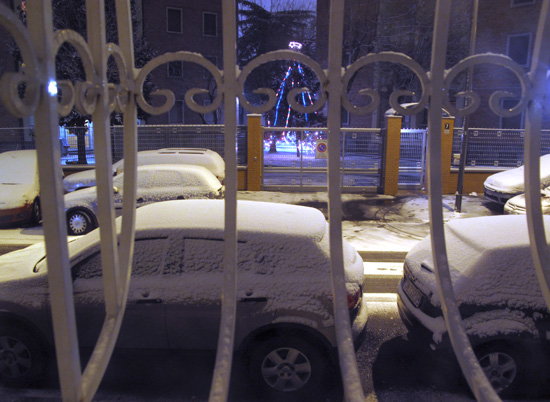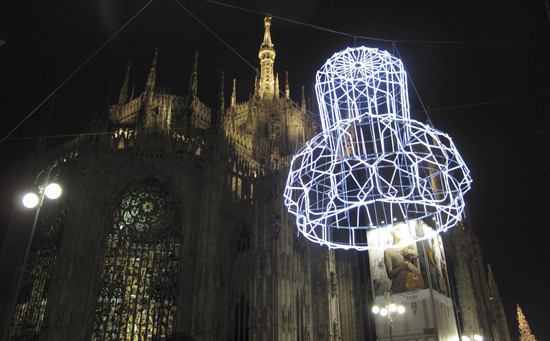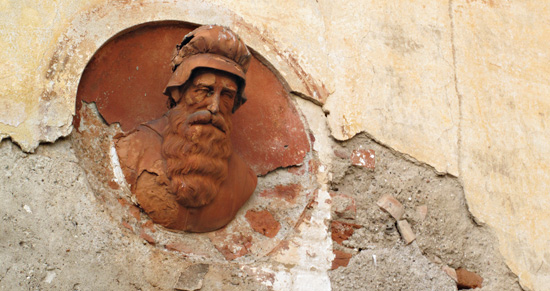
by Maureen | Jan 11, 2010 | Canals, Discoveries, Featured Articles, Incredible Locations, Journal, People, Photo of the Day, Photos
“I was born in 1945 during the war years and I grew up with family members all around me talking about politics and The War. They didn’t always agree. I think that being surrounded by these discussions as a child is why I love history so much today.”
Today Angelo became my second personal tour guide in two weeks, giving me yet another “3-hour-tour”. I just rode my bike all around the countryside southwest of Milano with my “History Buff on Wheels”.
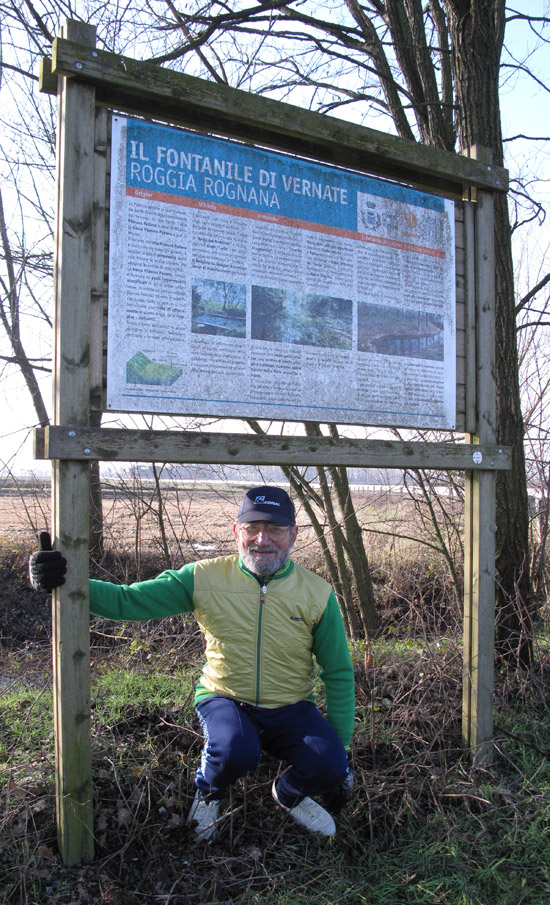
Angelo pointed out the “Fontanile di Vernate” one of the places where the spring forms a pond.
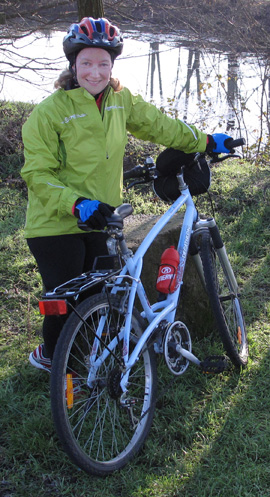
Oh yes. So lovely decked out in my winter riding gear…
When the sun came in the window this morning for the first time in ages, it woke me up and promised me a 45 degree day and my treasured, usual bike ride. I got the day, but not my usual ride. After pedaling along the Naviglio Pavese for about 20 minutes, I caught up with another rider and remarked how nice it was to be out. We talked for a minute or two as we rode, then I zipped ahead feeling full of energy and wanting to go faster. But he caught up with me. It was Angelo. We rode on, talking all the way. Feeling spontaneous and trusting, I agreed to his suggestion that we ride on further than I normally would have gone.
(I usually keep my rides to an hour and a half or two hours, and haven’t done much exploration alone on the more remote bike paths.)
Sure! Encounter some man on the bike trail and follow him all over the countryside! But of course!
We ended up riding on the narrow roads that wind between rice fields and other farm land. The whole time Angelo was relaying the history of Milan, Italy, Europe, WWII, Mussolini and Hitler… Berlusconi, Bush and Obama. He talked about the hardships during the wartime and how people were sustained by the rice of southwest Milano. (He doesn’t speak a word of English, by the way.)
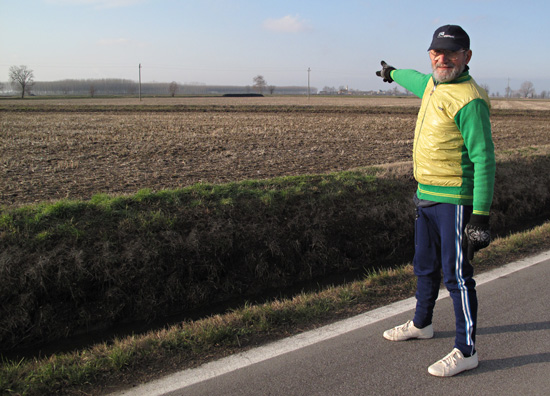
Angelo’s father’s birthplace is in the distance, where the church steeple is.
He pointed out where both his mother and father were born, and where they are both buried (Zibido San Giacomo). Angelo took me to old, fortified “cascine” – country farmsteads with castle-like main buildings and outbuildings – most refurbished and still in use as modern-day farms carrying on. He pointed out places where Leonardo da Vinci had been, worked, designed and created. Leonardo’s hand and mind are all over this local land.
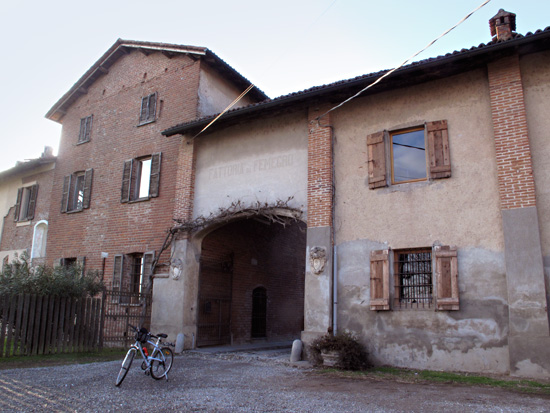
The entrance to Cascina Femegro.
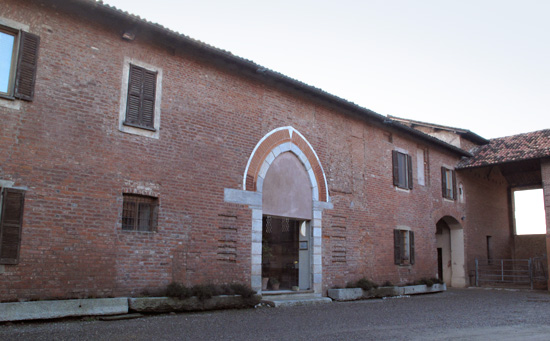
Within the inner courtyard of Cascina Femegro is this beautiful arched doorway. Straight across from it, 100 yards, are cattle in their stalls. A little girl was riding on her tricycle.
I saw a shrine in Zibido to Padre Pio (who had the “stigmata” markings matching Christ’s); the sarcophagus of San Giacomo, c. II-IX cent. – St. James – in the central courtyard of the town by the same name; and an old cascina, “Ca’ Grande”, Palazzina Pusteria Busca Pozzi.
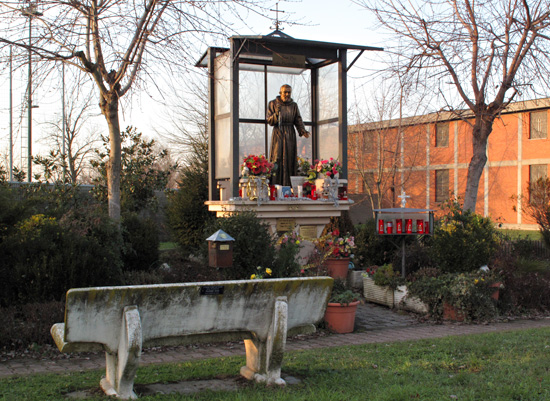
Shrine in Zibido to Padre Pio
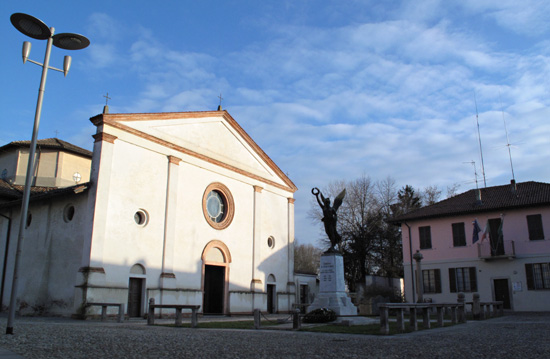
The church at Zibido San Giacomo.
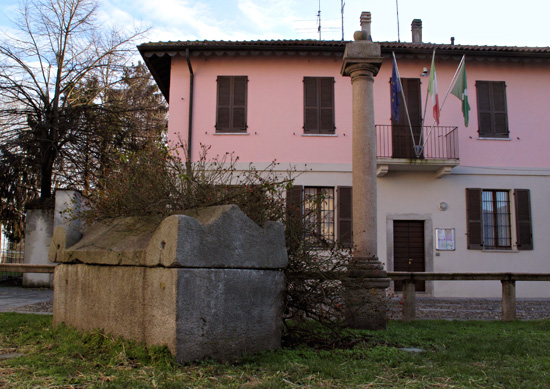
Sarcophagus of San Giacomo.
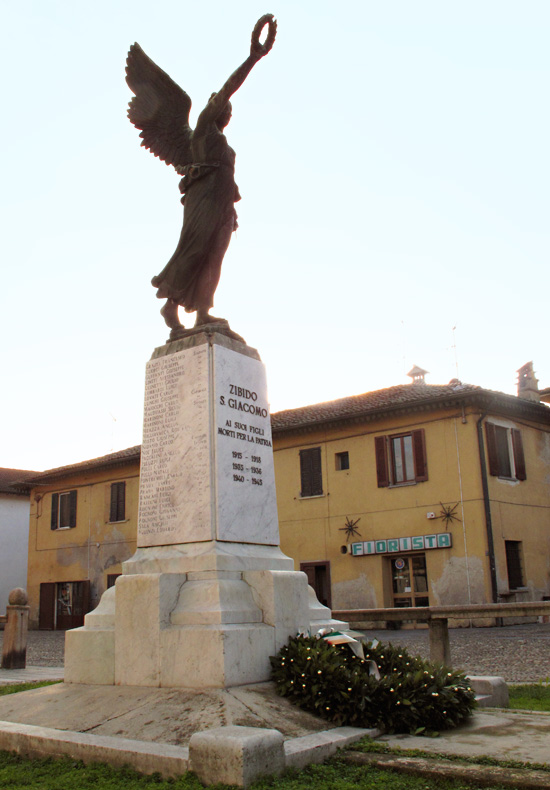
This is the memorial to those from the town of Zibido San Giacomo that have died in the wars.
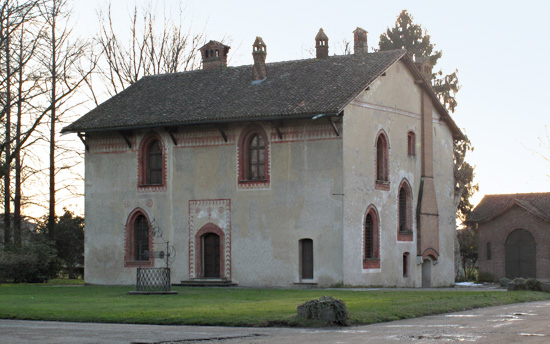
An old cascina, “Ca’ Grande”, Palazzina Pusteria Busca Pozzi.
(While riding through Zibido, Angelo’s daughter passed us in her car, going home. He rode to the house a half block away and told her about “this American woman”.)
Angelo explained the “marchite” – marshes – the rich, fertile land perennially wet from “i fontanili”, the underground aquifers and springs of the area. During the winter the ground’s surface may freeze but the ground itself is kept warm by the rising water. The farmed land has been formed into wide, humped rows, allowing the water to flow between the rows; the row peaks begin to grow grass earlier in the Spring than other locales. The milk from cows raised on this grass is said to be superlative.
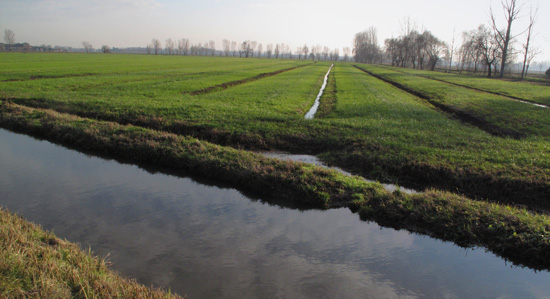
Le Marchite – The Marsh Farmlands
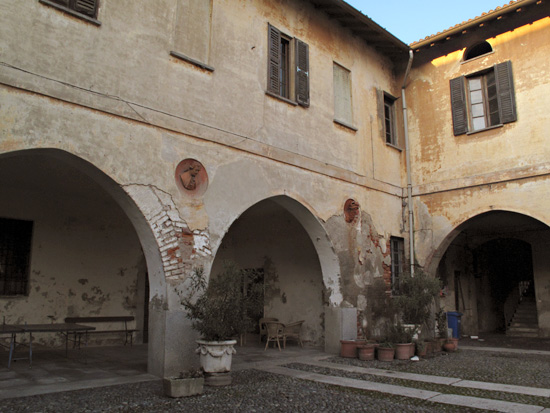
An old “cascino” back alongside the Naviglio Pavese, at the turnoff to Zibido; I think Angelo said it was “San Lorenzo”. Leonardo spent time here. In the inner courtyard, there are bas-relief busts of various people jutting from the walls.

We figured this one must be Leonardo.
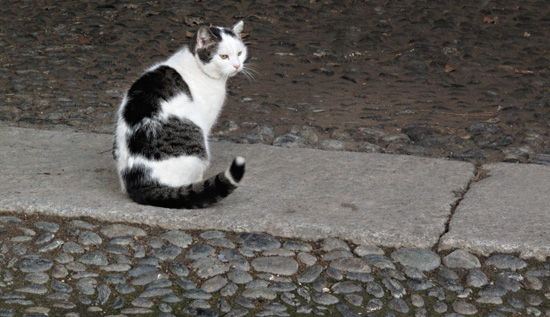
Of course there’s a cat in the courtyard!
Our route today was: South along the Naviglio Pavese to Binasco. West to Vernate and Calvignasco. North up through Rosate, back east to Noviglio, Mairano and Zibido San Giacomo. Angelo rode almost all the way back to Milano with me, to within 10 minutes of my apartment. He wanted to show me the maritime locks along the canal that Leonardo had designed.
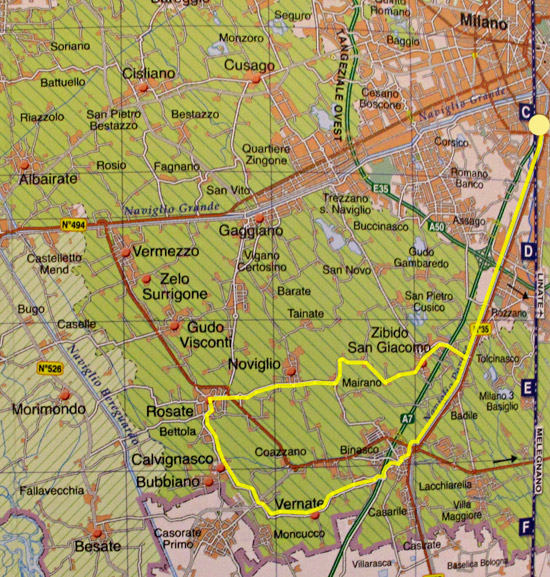
Our route – in yellow – through the farmland. My usual route is down the canal to Binasco and straight back. I’m going to feel this unusually long ride tomorrow!
He suggested I make a ride sometime to the Morimondo Abbey founded in 1136, and to the town of Vigevano to see a show of Leonardo’s work.
(I’m on stun. I could not craft these experiences if I tried!)
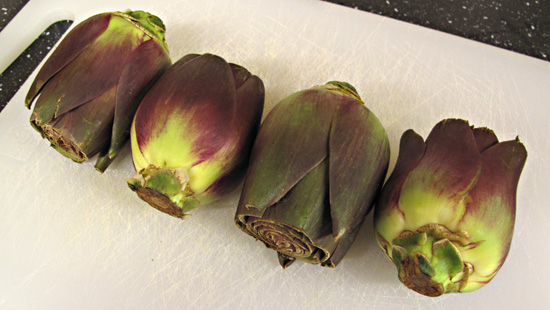
by Maureen | Jan 9, 2010 | Cheese, Christmas & New Year's Eve, Discoveries, Featured Articles, Food!, Journal, Meals, Photos, Shopping & Markets
Have you ever wondered about the first ones to eat something new that they hadn’t encountered before? IS it edible? What PART is edible? Should it be eaten RAW or COOKED? What part do you DISCARD? What part is most DELICIOUS? How is it best PREPARED? What should it be eaten WITH?
Traveling to and cooking in a foreign country is much like being a “primitive man” asking all those questions about newly encountered food items. But at least when you walk into a grocery store or step up to a market stall, someone has done the preselection for you and you’re not out in the woods trying to discern edibility. If it’s in the store, SOME part of it must be edible.
For the last couple of months I’ve been seeing these very small, young, almost-flower-like artichoke heads in the street markets and grocery stores. Very beautiful, but what do they DO with them?! I had no idea, and passed them up, regretfully. I had eaten marinated artichokes scooped out of little jars. Had steamed softball-sized heads and eaten them, leaf-by-leaf dipping the ends in butter. And I’ve eaten that sinfully fat-laden, hot dip with artichoke hearts, cheese, mayo and who knows what else. But I’d never done much else with them or seen them offered other ways. Yes, I’m sure the recipes and methods are out there, but the ones I just mentioned seem to be the across-the-board standards for eating artichokes.
On the evening of New Year’s Day, I was out walking around the Duomo and decided to have dinner out. I picked one of the few restaurants that were open, perused the menu and decided I HAD to have “Insalata di Carciofi Crudi” – Salad of Raw Artichokes! I ordered a “Pizza di Quatro Formaggi” – a four cheese pizza – to go with the salad, but that was secondary in my mind.
What arrived at my table was a bowl with paper thin shavings of very young, tender artichokes, including about an inch of the stem. They had been drizzled with a “fruttato” – “fruity” – extra virgin olive oil and lemon juice, sprinkled with salt and freshly ground pepper and tossed together with some thinly sliced grana cheese. Wow! Delicious! Simple, fresh in the middle of winter and quite a surprise. NOW I knew what could be done with those flowery artichokes.
Tonight, at the grocery store, I didn’t pass them up. They sold some untrimmed with thorny tips and 8 inches of stem, and they sold trimmed, packaged groups of 4. I considered the prices and how much would be thrown away from either and bought those that had been trimmed.
Usually, I would “just wing it” and approximate what I had tasted on New Year’s Day, but I decided to look online to see if there were any guidelines to follow. In doing so I found a handy Italian cooking website: Buonissimo.org. (Sorry. It’s all in Italian.) The recipe I found was what I had surmised and described above.

I removed the outer, half dozen tougher leaves and trimmed both ends to freshen them up. Then I cut the flower heads in half.
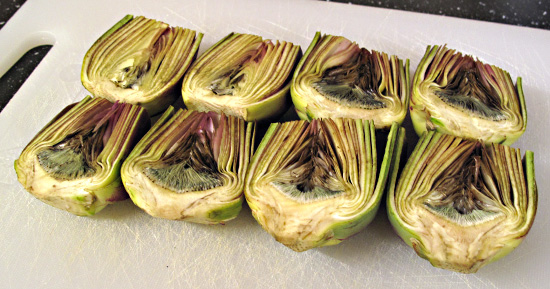
Since I don’t have a mandolin slicer here, I used my best Shun Tomato Knife, sharp and serrated, and sliced the artichokes as thinly as I could. (I left the furry inner parts, figuring they hadn’t gotten prickly.) I put it all in a bowl with the grana padano cheese (a nutty, almost sweet, hard cheese similar to parmesan), abundant lemon juice and extra virgin olive oil. Shook a little sea salt and grated some fresh pepper then gave it a gentle tossing.
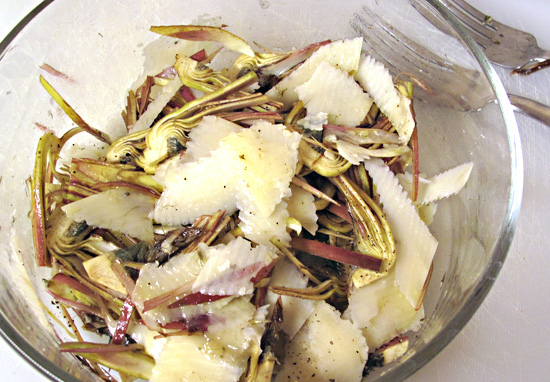
With my heaped serving of “Insalata di Carciofi Crudi”, I ate Norwegian, farm-raised salmon seasoned with Seattle’s Tom Douglas’ sweet/peppery Salmon Rub. The salad will become one of my new favorites. (If nothing else, it’s certainly good for the roughage!) But are the artichokian flowers available in the States?!
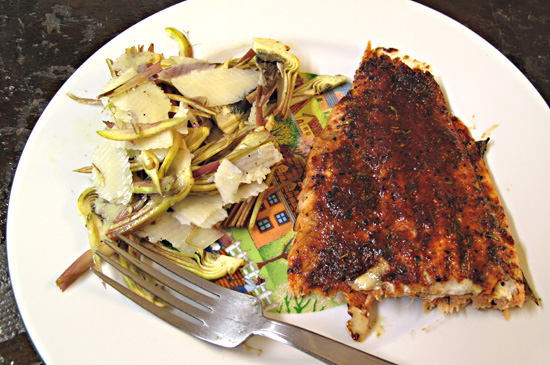
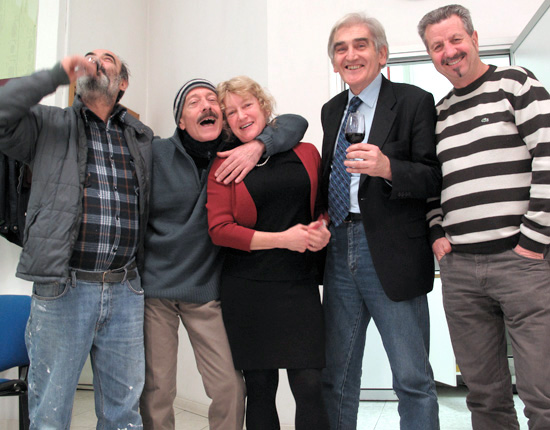
by Maureen | Jan 9, 2010 | Cheese, Discoveries, Featured Articles, Food!, Journal, Meals, People, Photos
“Maureen, there are a few of us having some appetizers and wine. Why don’t you come join us?”
It was Mario, the regional director for ONAV, the National Organization of Wine Tasters. We had met a few times at their wine-tasting events: Prosecco-tasting, Barbera- and Barolo-tasting, Champagne-tasting. I’m going to attend their 9 week course in wine-tasting, beginning in February. Any of their gatherings, formal or casual, are opportunities to sample some diverse and very special wines… and meet new people.
I took the Metro across town, walked two blocks and entered the ONAV classroom full of tables and chairs. These four guys – Michele, Vicenzo (giving me a choke-hold), Mario, Carlo – sat at a table cluttered with meats, breads, wine, oil and sweets. (The three are long-time friends of Mario, not with ONAV.) As you can see, it wasn’t a stuffy group.

We sampled a number of wines and also enjoyed a tasting of Extra Virgin Olive Oil from the San Gimignano region.
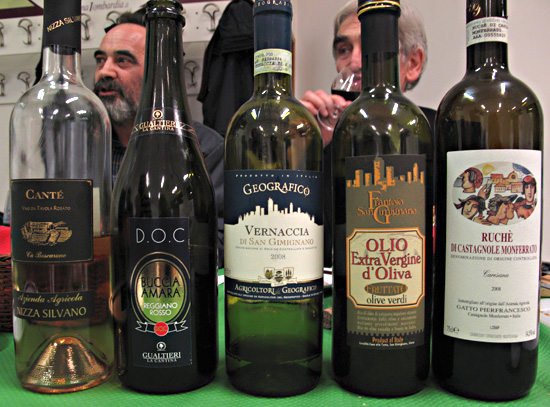
I didn’t realize until afterwards that I should have gotten a photo of Carlo in his striped sweater, with Vicenzo in his striped hat and me in my striped coat. It would have been a highly-visual photo. (Vicenzo asked if I know of any American women I could set him up with.)
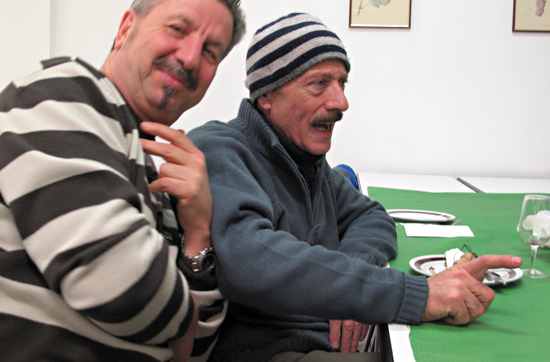
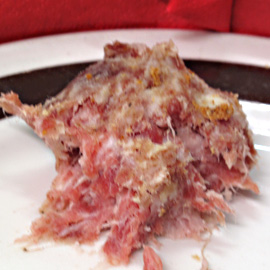 The table bore mortadella, salami and a raw, seasoned meat/fat combo that Mario simply peeled the casing off of and spread on bread. (I know the photo’s out of focus, but at least it gives you an idea of the meat’s appearance.) We ate from a large rustic loaf, a potato loaf, and Sicilian bread sticks and rounds.
The table bore mortadella, salami and a raw, seasoned meat/fat combo that Mario simply peeled the casing off of and spread on bread. (I know the photo’s out of focus, but at least it gives you an idea of the meat’s appearance.) We ate from a large rustic loaf, a potato loaf, and Sicilian bread sticks and rounds.
There was a bone-white spread of pecorino and ricotta cheeses pureéd together. And a special treat was the “Lardo di Colonnata”, raw, salted, herbed pig lard, aged at least six months and served as thin slices on bread. Mmm, good!
(I’ve become quite fond of eating raw meats and moldy cheeses.)
We drank a sparkling red, a white, a rosé. The most “startling” wine was the deep red Ruché (Roo-kay); I had never tasted anything like it with its very distinct flavor. (I’ll have a better vocabulary to describe it AFTER I take the class.) You could ask for Ruché* at your local specialty wine shop, but its very low production makes it unlikely that you’ll find any.
Our little post meal sweets were dried figs and apricots from Sicily, and almond pastilles that are frequently offered as favors at weddings. (In the States, too.)
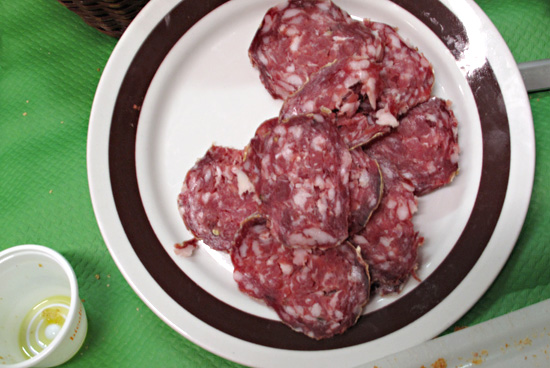
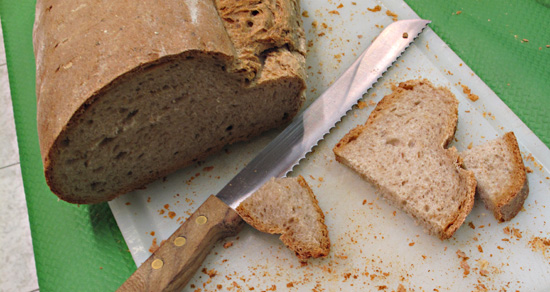
The very special end-note to the evening was a wonderful Passito di Pantelleria from the tiny little Island of Pantelleria, Italy, between Sicily and Tunisia. Passito, made from dried and shriveled moscato grapes, is a gorgeous amber color and a drink that requires every sip to be savored. I couldn’t keep my nose out of the glass; the scent was divine.
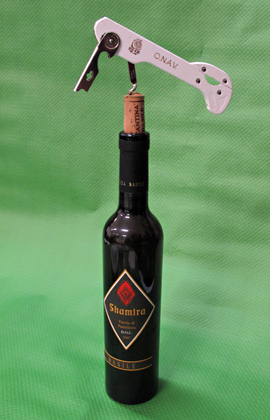
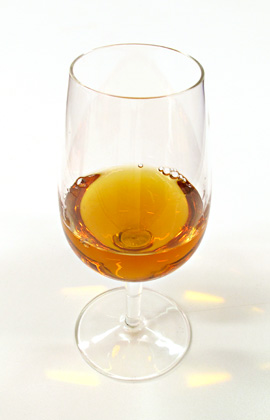
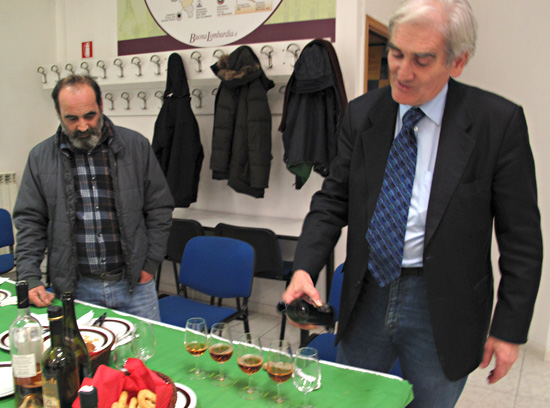
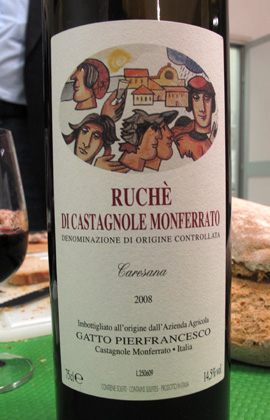
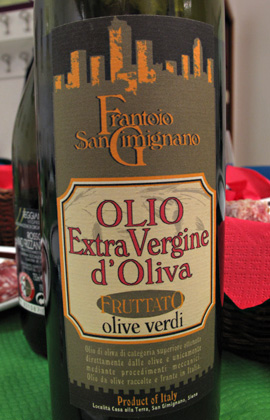
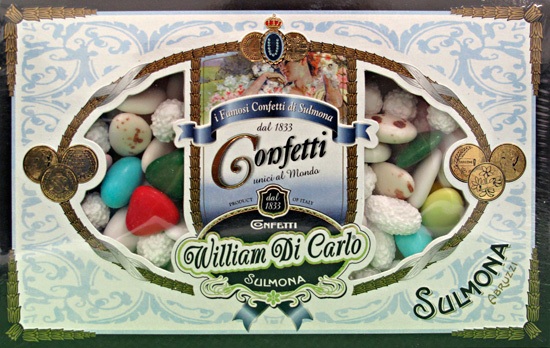
Below, on the right, is a bag of the not-fully-dried, shriveled moscato grapes used for making passito. You can eat them much like raisins.
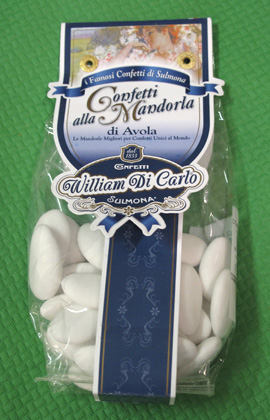
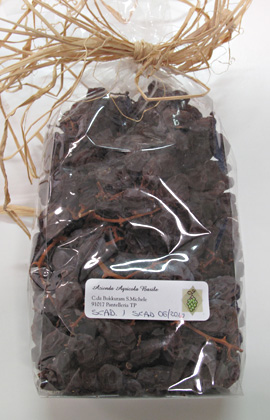
Ruché (from Wikipedia):
Ruché is a red Italian wine grape variety from the Piedmont region. It is largely used in making Ruché di Castagnole Monferrato, a small production red varietal winewhich was granted Denominazione di Origine Controllata (DOC) status by presidential decree on October 22, 1987. The current DOC recognized area of production for the wine, covers only about 100 acres [[40 hectares) of vines around the villages of Castagnole Monferrato, Refrancore, Grana, Montemagno, Viarigi, Scurzolengo andPortacomaro.[1] Ruché di Castagnole Monferrato is, therefore, one of the lowest production varietal wines in Italy. The grape is also grown to some extent in the neighboring province of Alessandria.
There is some debate about the origins of the Ruché grape. One theory is that the varietal is indigenous to the hills northeast of the town of Asti. Another theory is that the grape is a local variation on a French import. It has been grown in the area for at least one hundred years but has only recently been marketed and consumed outside of the immediate vicinity of its production. Ruché di Castagnole Monferrato tends to be medium bodied with notes of pepper and wild berries and floral aromason the nose.[2] The wine is often characterized by moderate acidity and soft tannins. In the Piedmont region it is often paired with slow-cooked beef, northern Italian cheeses and mushrooms.
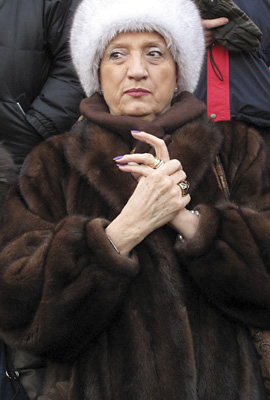
by Maureen | Jan 7, 2010 | Discoveries, Featured Articles, Journal, People, Photos
Gotta love these Italians. They had two national, Catholic holidays at the beginning of December. Then two weeks off for Christmas and New Years. Then, today is the Feast of the Epiphany, also a national holiday. (Italy is about 98% Catholic.) A lot of people took this whole week off since they were already on a two week break and why come back for two days, have one day off, and then come back for two more days before the weekend? Might as well extend the two weeks into three.
There was a parade through town for the Epiphany. Actually two parades: the official one of Magi and Wise Men, then the parade of older, Milanese women in their fur coats. I must have seen a thousand fur coats today. Boggling.
After rain, snow, cold and gray, the 45 degree day brought the crowds out. It seemed that this must be the traditional time to strut one’s fur. Amazing. I was more amused by playing sleuth photographer and people-watching than I was by the pageant of the “real” parade.
(I shudder at some of the faces of these women. Some look cold and hard.)
The furs were worn with argyle, cashmere and hand-knit. With fur hats and berets. There were full-length, knee-length, sporty-short, wraps and stoles. There were SO many women in furs, that it was comical, an exaggeration. Was anyone else noticing?
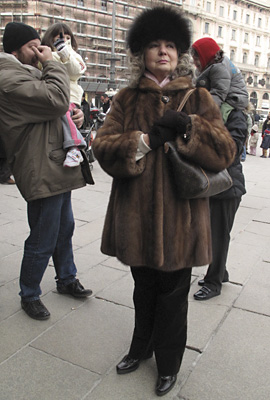
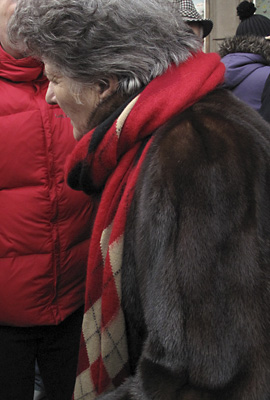
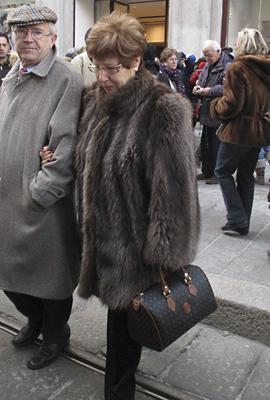
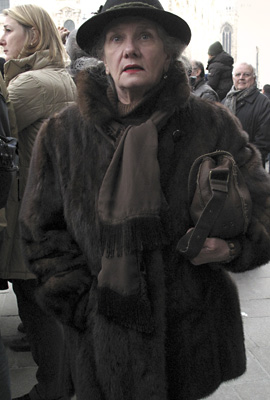

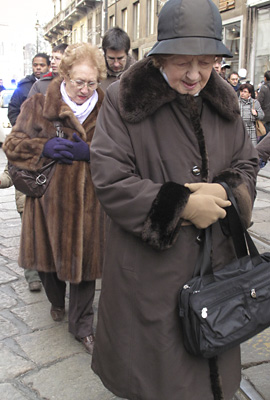
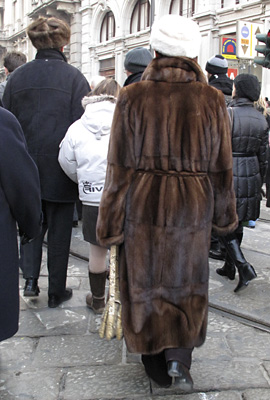
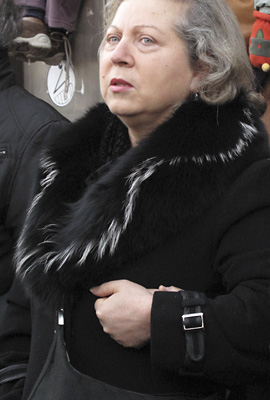
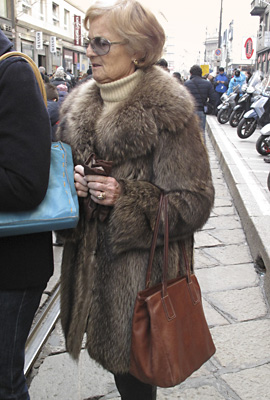
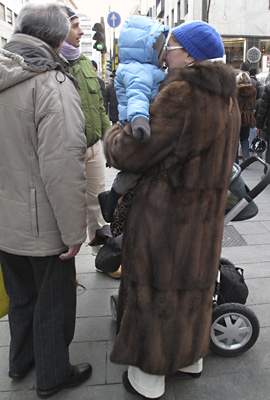
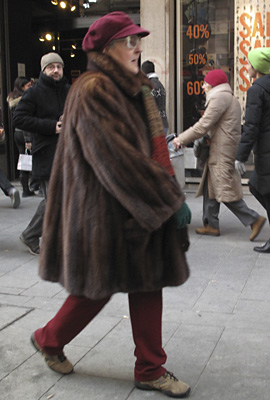
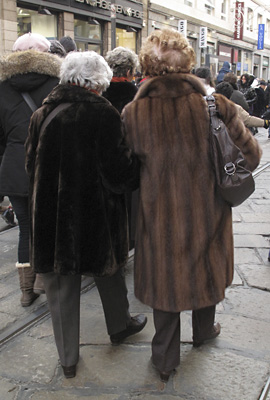
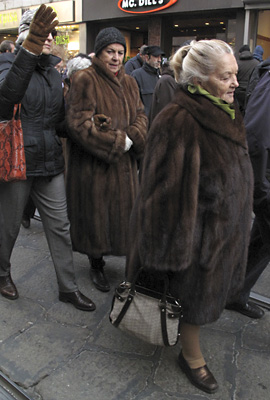
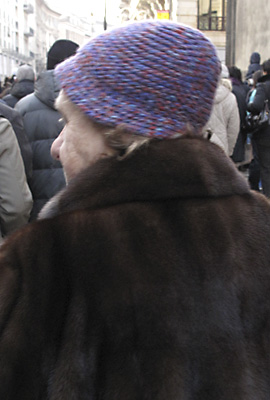
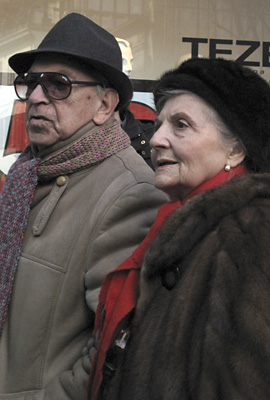
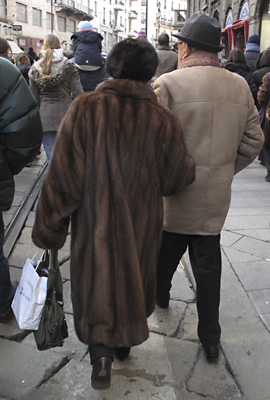
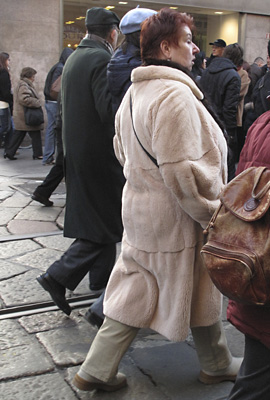
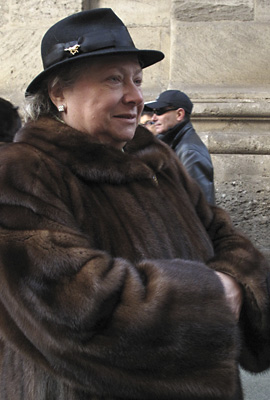
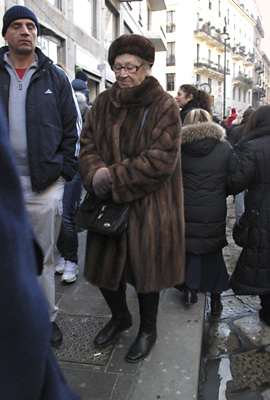
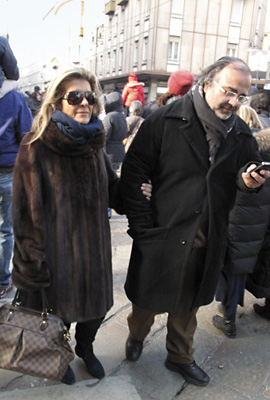
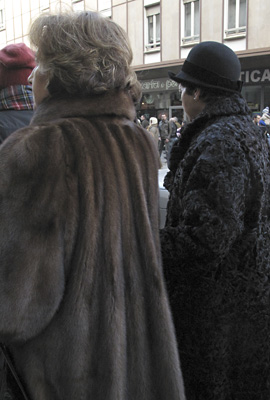
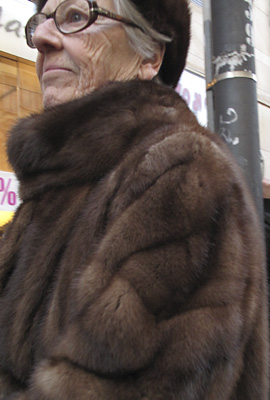
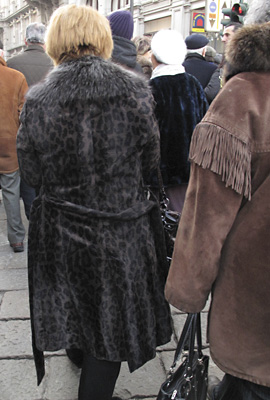
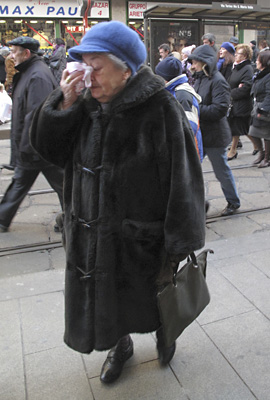
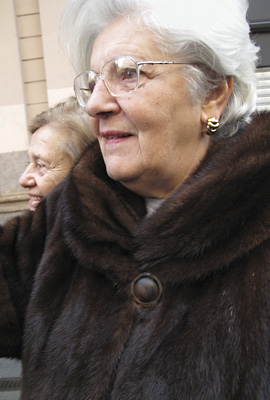
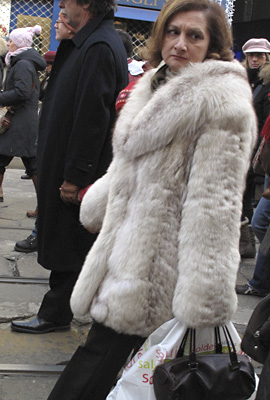
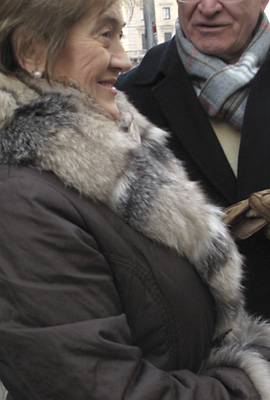
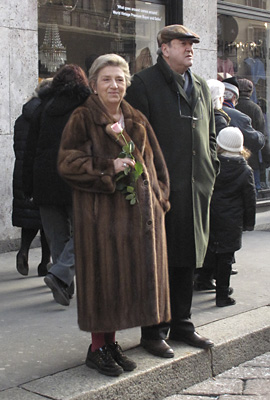
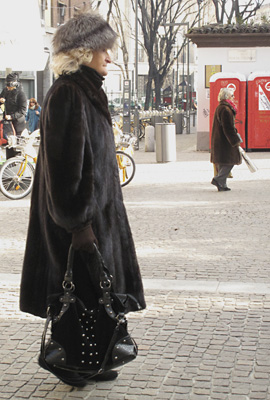
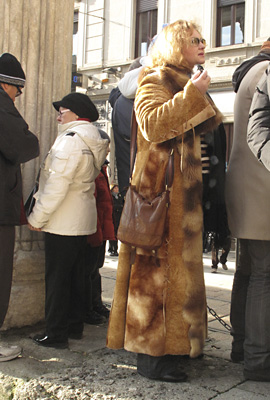
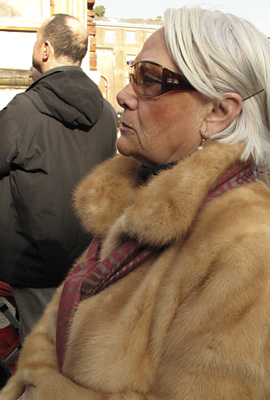
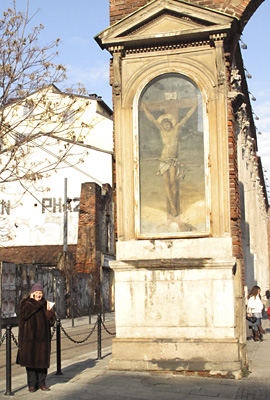
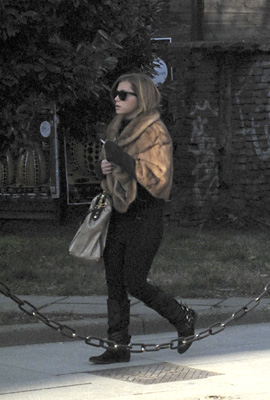
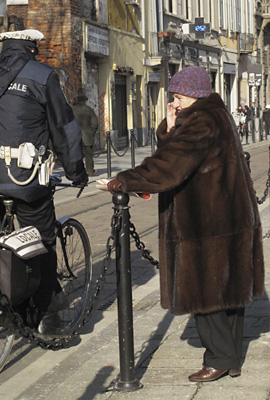
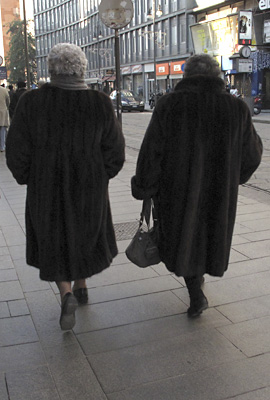
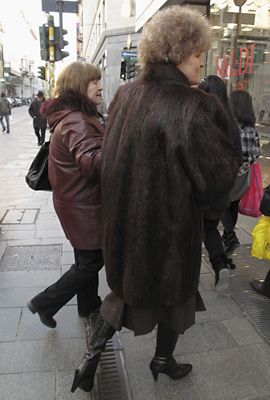
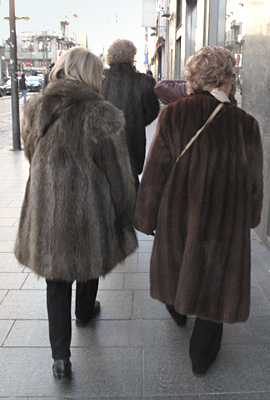
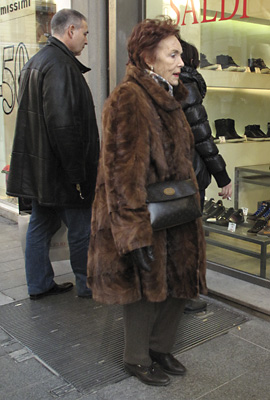
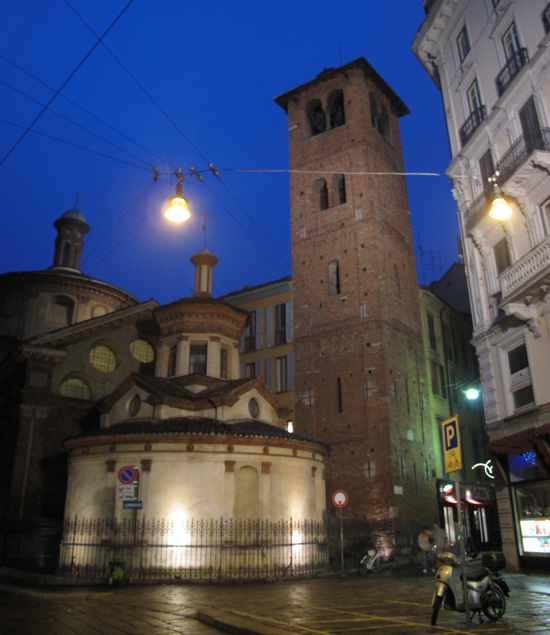
by Maureen | Jan 2, 2010 | Christmas & New Year's Eve, Discoveries, Introspection, Journal, People, Photos
From my journal entry, New Year’s Day 2010:
I took off walking toward the Duomo at 4:10 today. It’s New Year’s Day. I needed to get out of the house and get my body moving. I decided to zig zag through the “neighborhood” on streets I’ve never seen before, rather than take the sure, known route.
Along the way, an old woman approached me while walking her dog. She had seen me from a distance blowing my nose in my hankie. She rattled something off fast. “Non capisco,” I said finally. “What do you mean you don’t understand!?”, she said in Italian. We ended up comparing handkerchiefs. (Hers had embroidered flowers on white linen. Mine was deep magenta with big, off-white polka dots) I said I had handkerchiefs from my “nonna”.
She stood there in her patterned, fleece pants, just-this-side-of-pajamas and commented on the large size of my coat buttons. “Yes. They’re as big as plates!”, I said. “We could eat off them!” We both laughed, then wished each other a happy New Year and walked on.
It was late afternoon, getting on toward evening. The light was dimming and I was walking where I never had before. But I knew my general direction, took the lesser roads and kept moving. The streets were vacant. Hardly a car. Not a pedestrian. But as I neared the area of the Duomo, a few more people appeared, a few more restaurants and cafés were open (no shops!) and the energy picked up.
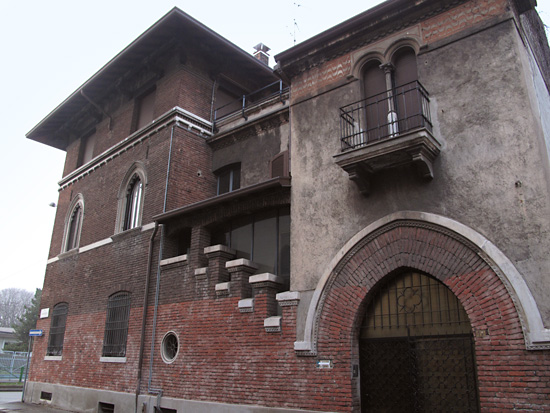
This house was in a cozy, little area of narrow streets, just north-east of me. What’s its history?!
I came to another street corner and stopped in my tracks at the sight of the Church of Santa Maria and San Satiro on a site originally established in 879 a.d. Where did that come from!? Just one block off the main drag through town! I had never seen it before.

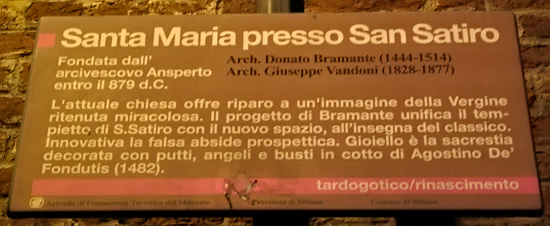
When I walked in, New Year’s Day evening, a small group of people was being led aloud in saying the rosary. I chimed in in English while I was there.
Heading for Monte Napoleone to see the window displays, I went north and to the east. The shops along that exclusive, narrow street are outside of my reach or comprehension. Actually shopping there is not a thought. My real goal was getting exercise and being out of the house, so I simply strolled and looked and shot a few photos until I got hungry.
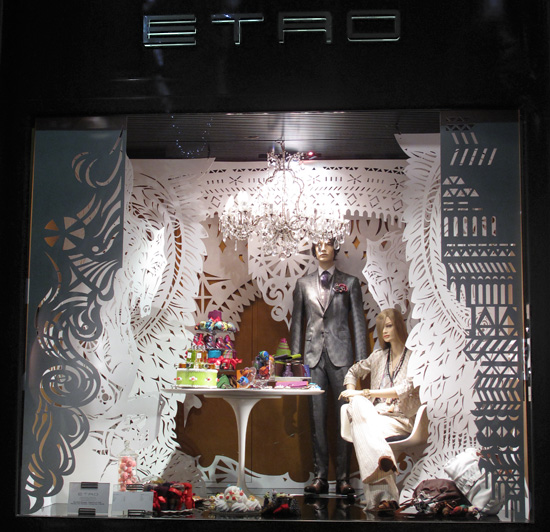
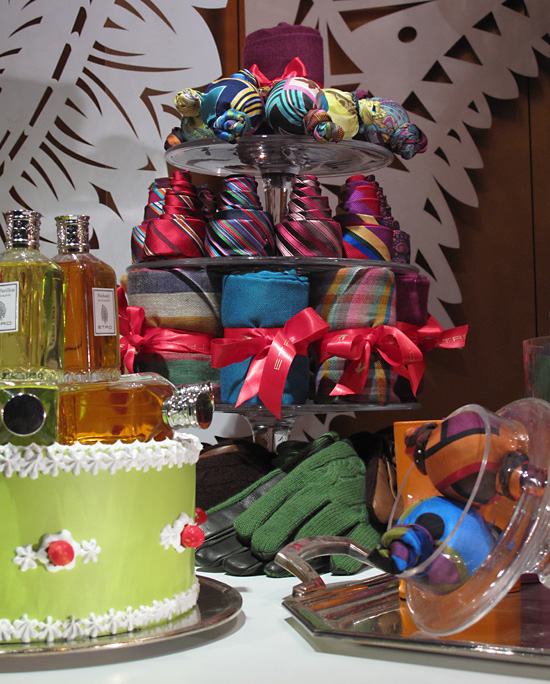
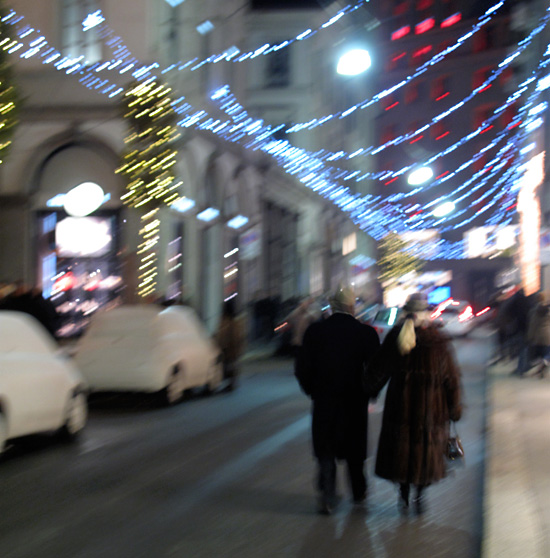
by Maureen | Jan 2, 2010 | Christmas & New Year's Eve, Discoveries, Incredible Locations, Journal, Paris, People, Photos
I haven’t seen this much fur ever, anywhere. Between Milano and Paris my eyes are full-up with fur coats! Women stroll arm-in-arm with a sweetheart or a girlfriend and browse the shop windows in their below-the-knee, full length coats. Fur ruffs. Fur hats and shawl collars.
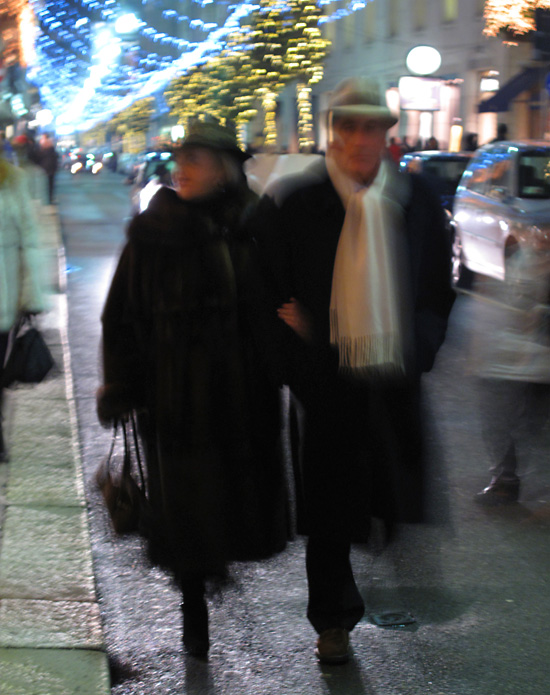

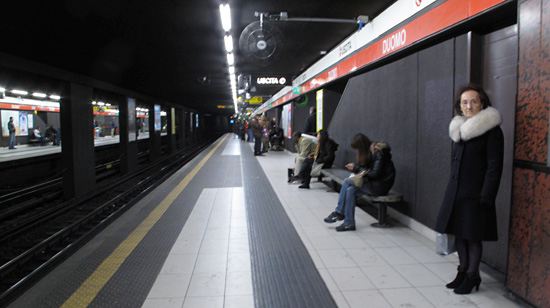
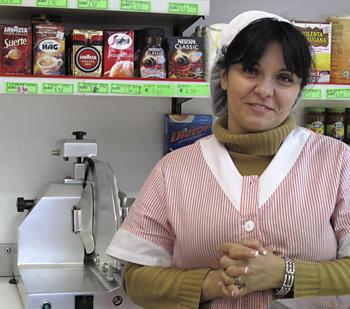
by Maureen | Jan 1, 2010 | Featured Articles, Incredible Locations, Journal, Paris, People, Photos
New Year’s Eve. “Capodanno” they call it here. Fireworks are going off in the distance.
Having just come back from the energy of Paris, I don’t feel compelled to go downtown tonight, but will follow my tradition of spending the evening writing. Part of that act is the reflection on the past year, and for 2009 the novelty is in the last 6 months, since I moved here to Milano in June.
When I decided to move here, I very consciously wanted to have relationships. I wanted to form friendships and know people. I didn’t want to remain on the outside surface, as tourists do, but rather touch hearts and have mine touched. I left behind my treasured communities in Seattle, and came here where I had none.
Reaching this 6-month mark, I started to think about all the people I’ve gotten to know in big ways and small. I see people at school. At some of the stores I frequent. I’ve met some while traveling. And now, even see familiar faces while just out walking in the neighborhood. I’m creating what I wanted!
Allow me to introduce you to some of the many people I’ve either enjoyed a single, rich conversation with, or have had the pleasure to create a friendship with:

JUSTINE – Kenyan. I met Justine soon after I arrived and now I shop at that store a mile away just so I can say “hello” to her. Here she is cutting prosciutto for me.
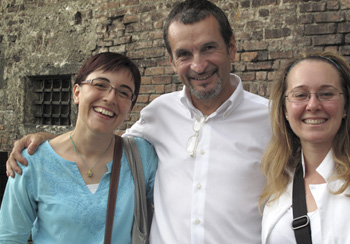
EVELINA, BRUNELLO & GLENDA – Italian. These are the three I work most closely with at NABA.
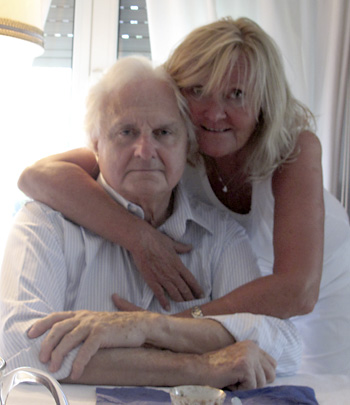
PIOTR & EWA – Polish-German and Polish. We met in the summer when our tables were an inch apart and I was eating octopus. We’ve been getting together once a week or so ever since! Eva is a Pharmacist and Piotr is a retired conductor from Teatro alla Scala.
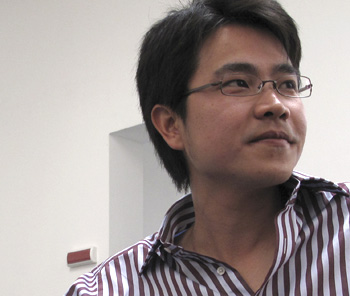
NARIN – Thai. Architectural faculty member from Chulalongkorn University in Bangkok.
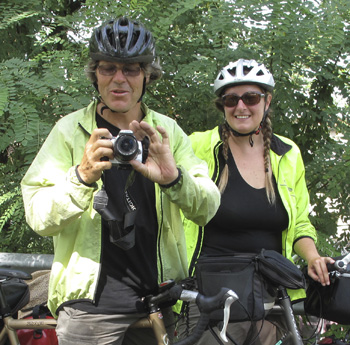
PETE & ERIN – Australian. We met on the bike trail in the morning, and they slept on my fold-out bed that night! They were biking around Europe for 6 months and relying on the kindness of strangers.
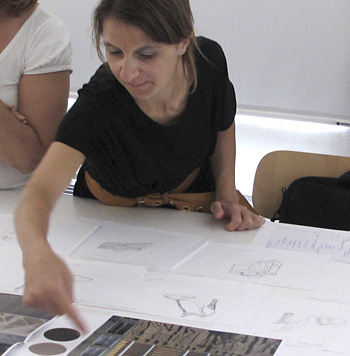
ORIETTA – Italian. Concept researcher and trend forecaster in fashion and accessories. An instructor at NABA.
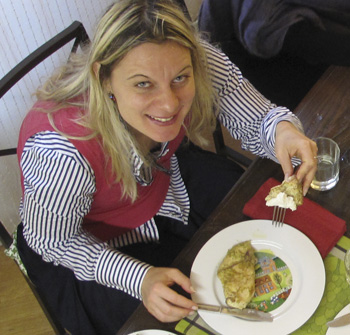
LYDIA – Swedish. Lydia makes the way smooth for NABA’s agents.
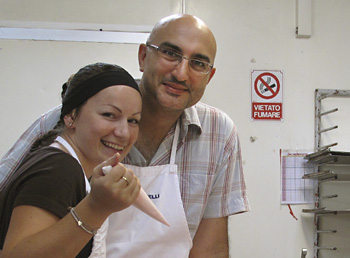
DOMENICA & PAOLO – Italian. They have the Spezia Pasticceria that creates those incredible pastries I’ve shown. They’re two blocks away from me, and we met when he did a search on the pastry shop and found my blog. They make the best pastries in town.
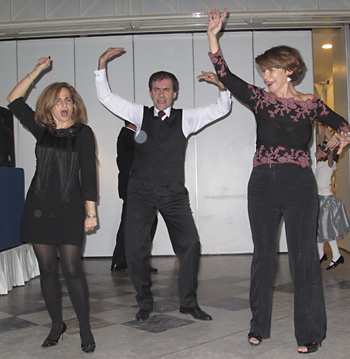
ANASTASIA, EMANUELE & ENCARNA – Greek and Spanish. Emanuale is the Consulate General of Greece. We shared a table and the dance floor at the Thanksgiving Dinner.

ENZA – Italian. Born in Sicily, raised back-and-forth between there and Australia. She and her husband own the corner grocery where I buy my water, and we chat.
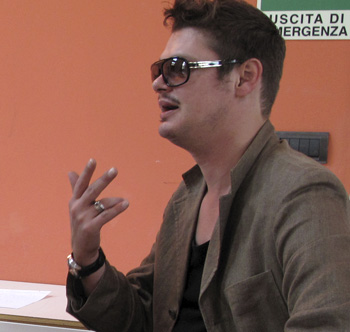
TOMA – French, but has lived in Italy for years. He’s established in fashion and teaches at NABA.

BARBARA – President of the Benvenuto Club.
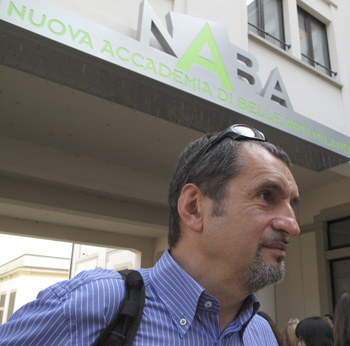
BRUNELLO – Italian. Vice President of NABA.
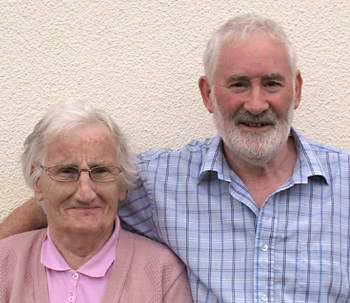
LILY & TOM – Irish. My cousins from my family’s historic homeland in Fermanagh County, Northern Ireland.

LEE – British, but she’s been in Italy a long time. Lee’s been working in fashion for about 30 years. She was my Fashion Design instructor in 2008 at NABA.
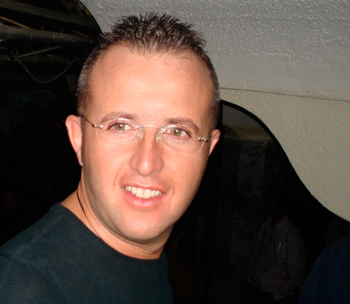
CIRO – Italian. A One-man Chamber of Commerce for the town of Casamicciola on the Island of Ischia.
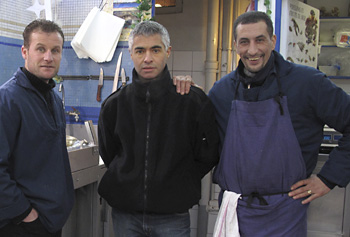
SAM, PATRICK & MOMO – French and ? These three are fishmongers down the street from my hotel in Paris. Patrick, in the middle, speaks some Spanish, so between that and sign-language, we all had some laughs.

DAN – American. From Ohio University, working with NABA. Executive Director and Professor of Geography.
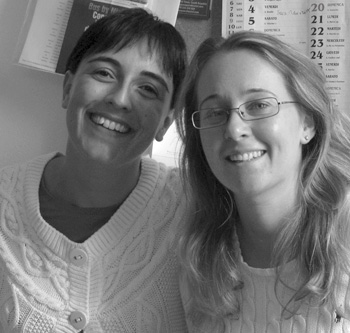
EVELINA & GLENDA – Italian, though Glenda lived in the U.S. for 8 years. These two coordinate the myriad details of the NABA summer and semester programs.
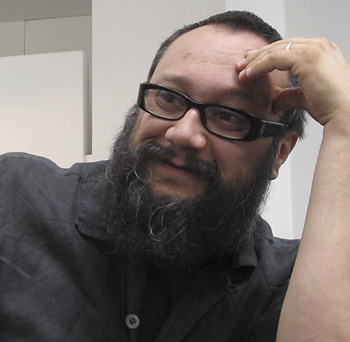
LUCA – Italian. We’ve discussed “Italian Design Methodology” and the differences in teaching methods between Italian schools and U.S. schools. Luca is NABA’s Design Program Coordinator.
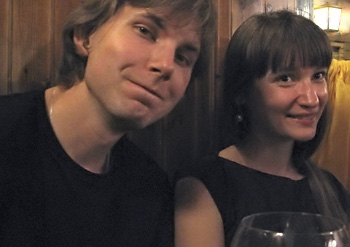
DIMITRI & VERA – Russian. Architects, instructors at NABA.
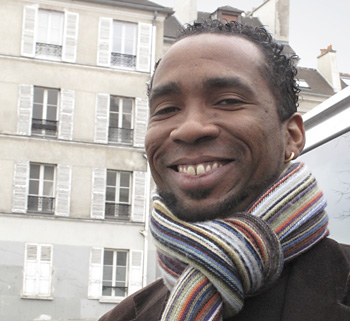
ENIEL – Cuban. Moved to Paris 5 years ago and speaks some of 5 or 6 languages. Loves history and was my personal tour guide in Paris.
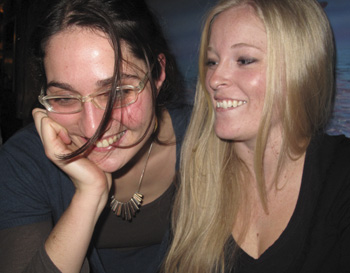
MADALENA & EMILY – Italian and Australian. Madalena lives in the mountains near Milano, and teaches Italian language courses. Emily is a student in my class.
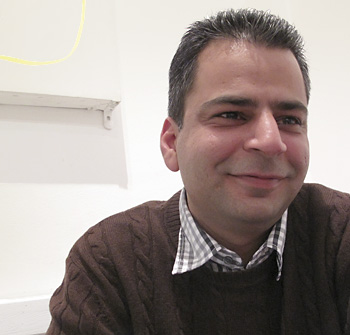
AHMAD – Pakistani. Living in Venice and assisting his brother with his restaurant, “Noemi”.
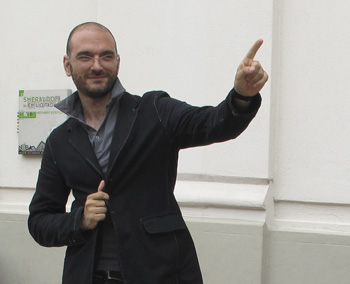
FRANCESCO – Italian. Architect and instructor at NABA. He’s engaging and involved with the students.
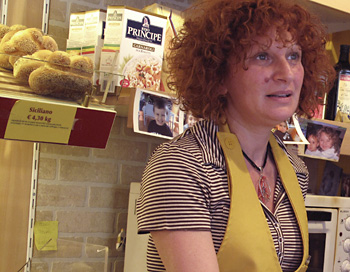
GISELLA – Italian from Sicily. She has a Siciliano bakery just down the street. Sometimes I’ll buy little regional specialties from her.
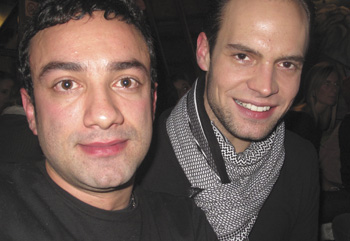
HASSAN & SEBASTIAN – Iranian and German. We’ve been in Italian language classes together.
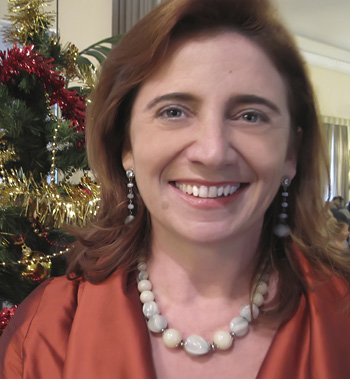
IDA – Italian. We met at the Benvenuto Club Christmas Bazaar, which is a fund-raiser for several local charities.

JAMES – British. He’s opened up a shop here selling textiles and is taking Italian language classes, too.
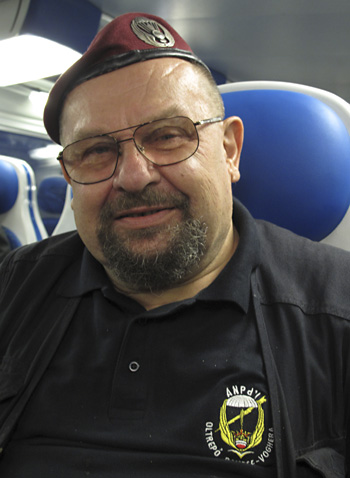
ROLANDO – Italian. We met on the train to the airport. I was on my way to Seattle. He was on his way to an EU gathering of parachutists from 10 different countries. He was in the Army in the mid-60s. He pulled B&W photos of his father out of his suitcase to show me.
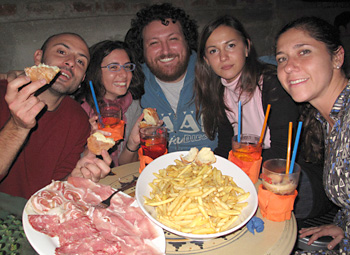
MARZIA & FRIENDS – Italian (Sicily), Russian and ? Marzia’s on the right and after we had gone out for “apperitivi”, we met up with her friends at another restaurant. Marzia is also with NABA.
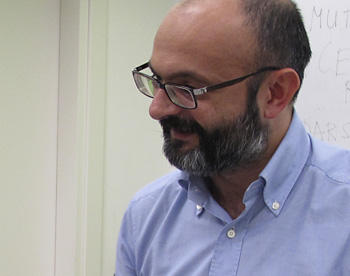
REMO – Italian (from the south). A Materials Engineer. We’ve had some good conversations and I sat in on some of his design classes at NABA and accompanied them on field trips.
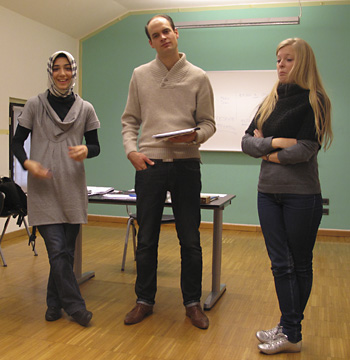
OZDAN, SEBASTIAN & EMILY – Turkish, German & Australian. In this photo, they were doing a skit in our Italian language class.
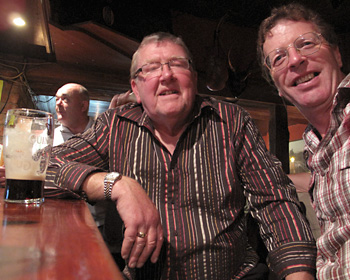
NORM & JOE – Irish. My Guinness drinkin’ buddies in the far northern reaches of Ireland.

JAN – Norwegian. He got talked into wearing a “Babbo Natale” hat at the Scuola Leonardo language school’s Christmas party.
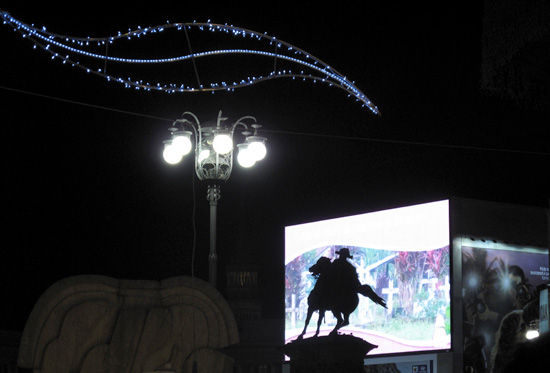
by Maureen | Dec 20, 2009 | Christmas & New Year's Eve, Featured Articles, Journal, Photo of the Day, Photos
In addition to the International Festival of Light that’s present in Milano right now, there are special light displays and decorations all over town. I like the illuminated scrolls that line the major avenues, these along Via Alessandro Manzoni, through the center of town:

Brera is the chic, creative, cultural neighborhood north of the Duomo. It’s home to theatres, museums and the Academy of Fine Arts, among other things:
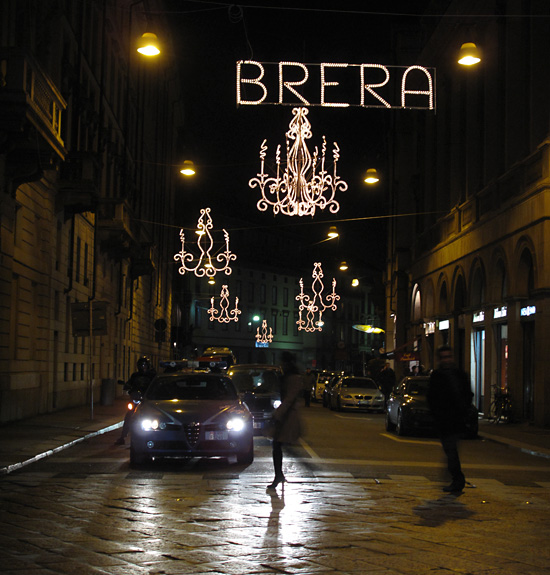
Isn’t this a beautiful “chandelier” along Corso Garibaldi? The lighted animals are part of the international exhibition. There are several clusters of them spaced along the sidewalk:
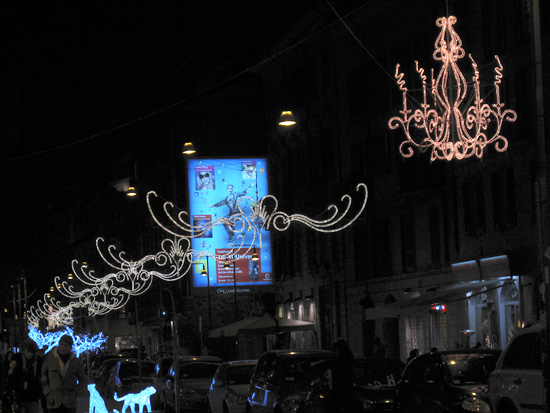
The navigli, (canals), have their share of lights, too, and make for a nice stroll or boat ride:
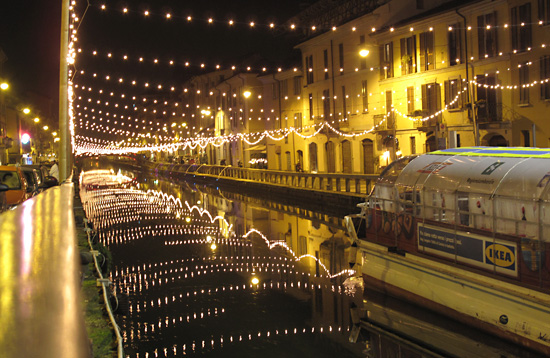
Come up out of the Moscova metro stop, and you’re faced with a towering tree of these violet-lit spheres:
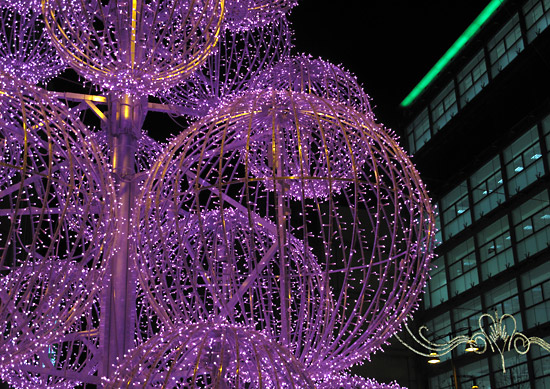
Standing at the entrance to Via Mercanti, I laughed at the conjunction of the decorative leaf of light, the street lamps, the curvaceous stone sculpture, the statue of Vittorio Emanuele II in the Piazza del Duomo, and the huge video display. What an array!


by Maureen | Dec 19, 2009 | Christmas & New Year's Eve, Featured Articles, Graphics, Journal, Photos
Milan is currently the host of 33 large-scale lighting installations. (6 December – 10 January.) In the evenings, I’ve wandered through town to see the pieces and love how it changes the night scene, the visual texture and energy of the city. These intriguing works of light encourage after-dark strolls.
Along Corso Vittorio Emanuele, Milano’s hot shopping street between the Duomo and the Galleria, these jewels of “Spiro Gira” hover over the street:
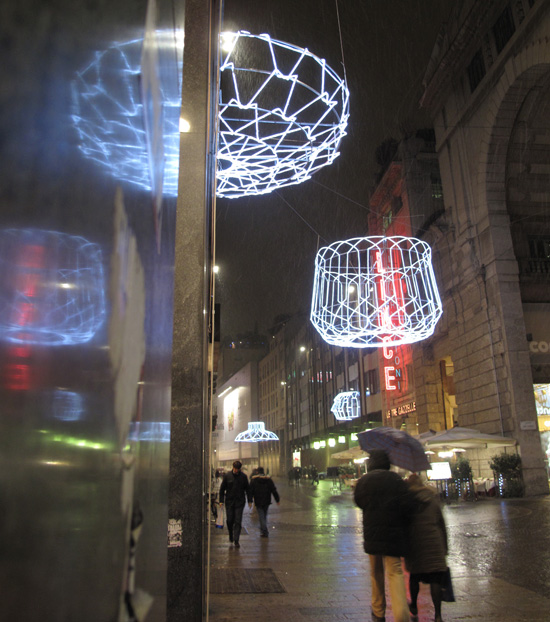
In the piazza in front of San Fedele, floats an illuminated satellite:
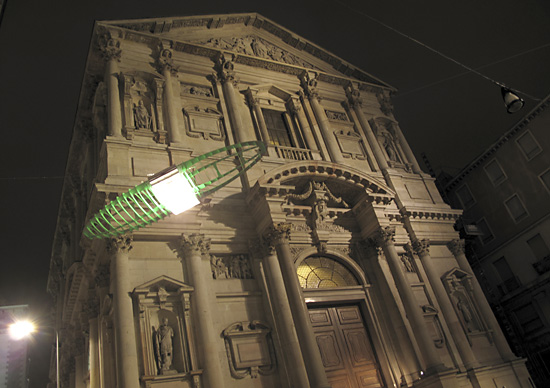
The facade of Teatro alla Scala requires a patient observation. Music is broadcast in the piazza and the theatre’s face is transformed with light throughout the performance. Here, the building becomes a library of treasured, old books, including Leonardo’s “Codex Atlanticus”:
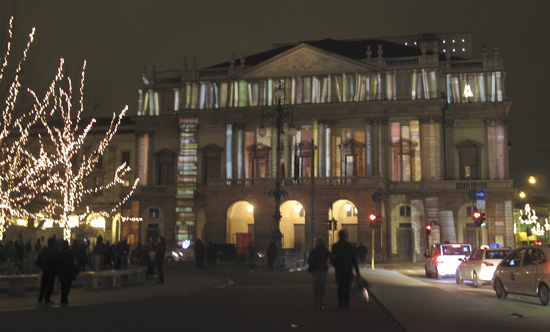
One of Milano’s several luxe shopping sites is the Galleria di Vittorio Emanuele, with Prada and McDonald’s at its center. As a part of the lighting installation event, the Galleria dome is draped in blue lights, illuminated when two people kiss under the giant mistletoe beneath. (One euro is being donated for every kiss.)
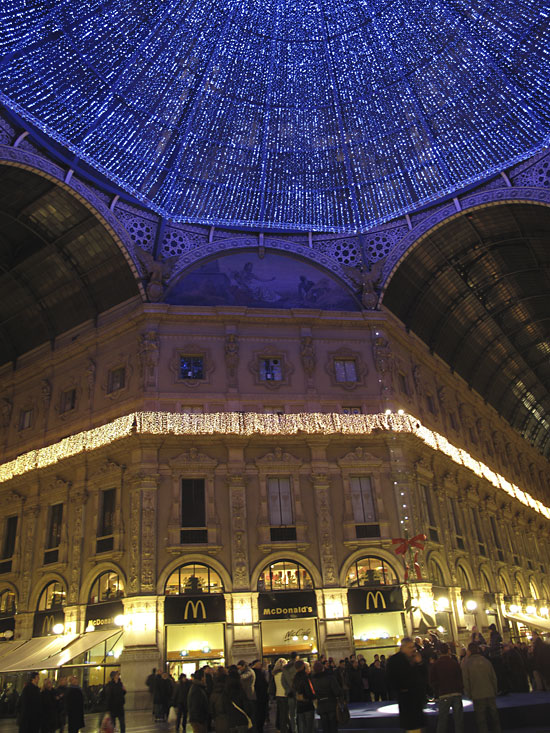
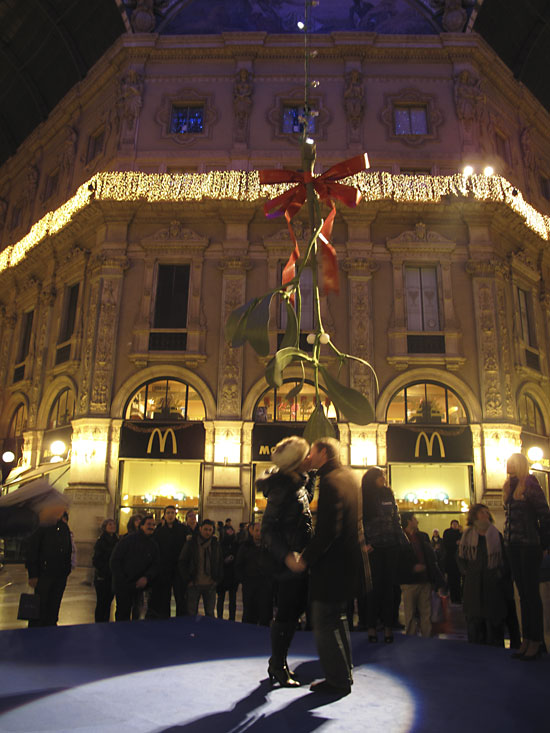
Near my home, at the convergence of the canals, the arches at Porta Ticinese have been illuminated with long strands of sparkle and a changing wash of color:
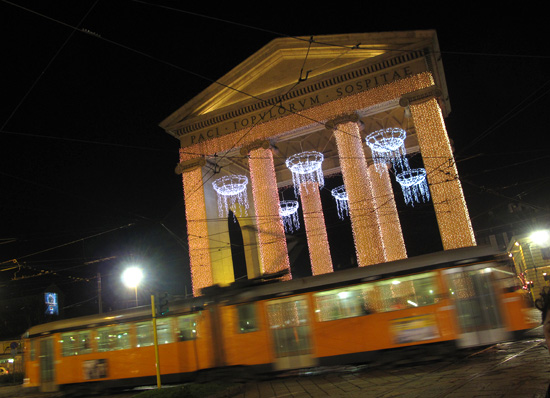
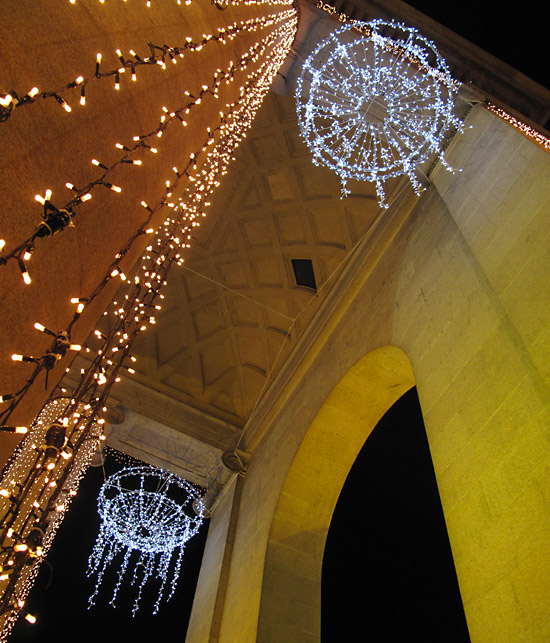
I can see that there are many more pieces for me to seek out! There will be many more evening strolls after the first of the year.
This web site offers an index of the lighting installations:
http://www.ledfestival.it/index.html
Here’s the summary from the City of Milano website about the project:
DESIGN LIGHTS UP THE CITY
Milan calls the creative excellences in order to furnish and adorn with light the metropolis: young talents and great designers will transform the city in an open air stage of installations and works of contemporary art and design.
Milan lightens itself of design: a great competition among the young talents of the most important Schools and Academies of the metropolis and a special invitation to the most important designers of the contemporary scene, will transform the city in a laboratory of ideas and experimentation in order to give life to an open air stage of light’s installations, projections and stages of design and contemporary art.
LED is a project that will be developed in more phases, opening with a great competition. Students and former students, professional people, Italians and foreigners, are called to be compared and to project works of light in order to furnish the city and illuminate squares, avenues, historical parks, monuments and buildings, from the city centre to the suburbs. A skilful work of experimentation and research that, during the month of May, will see the exhibition of the winners and great designers projects. The finalists will be rewarded in that occasion from a prestigious jury and will win the realization of their own work in order to `adorn’ with light and creativity the city in the month of December 2009.
Out of competition: a special invitation will be addressed to the great masters of the design, ten excellent names both Italians and foreigners. Their projects will illuminate Milan for the next Christmas period alongside the works of the young talents.
Milan, already Capital of the design, becomes with LED an international display window, a place of innovation able to offer a stimulating ‘cultural experience’ for the exchange and the comparison of knowledge. An appointment that involves the entire creative and productive system of the metropolis, increasing from the first edition the expositive circuit from the public places to the art galleries, the ateliers and the shows-room, in a logic of a widespread event that can involve the city to 360 degrees.
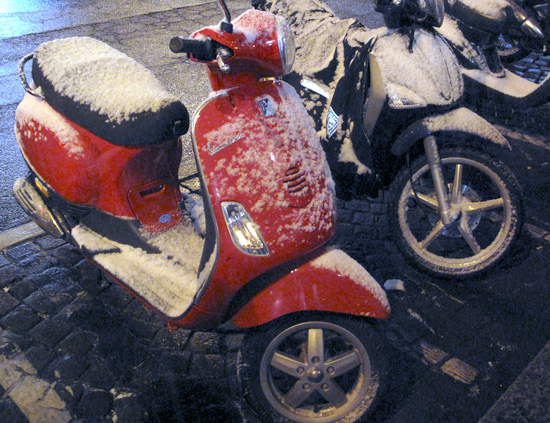
by Maureen | Dec 19, 2009 | Christmas & New Year's Eve, Featured Articles, Journal, Photos
The fridgy day and the taunting sky followed through on their promise and have coated us all with 2 inches of snow. And it’s still coming down. What will I wake up to? If there’s a thick, white blanket of snow I’ll have to hop on the subway and go down to the Duomo to take pictures there and around town.
As the snow began to fall, before it stuck to the pavement, it clung to the winter coats going in and out of the retail shops surrounding the Duomo. Umbrellas kept snowflakes out of the eyes. Wednesday’s salt piles remained, and stained my black boots.
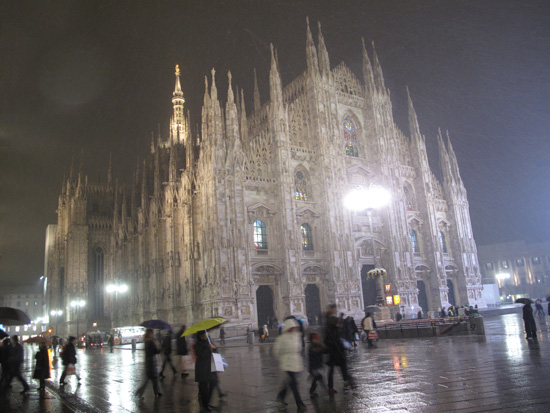
This snow plow was at-the-ready earlier in the evening at the Piazza del Duomo.
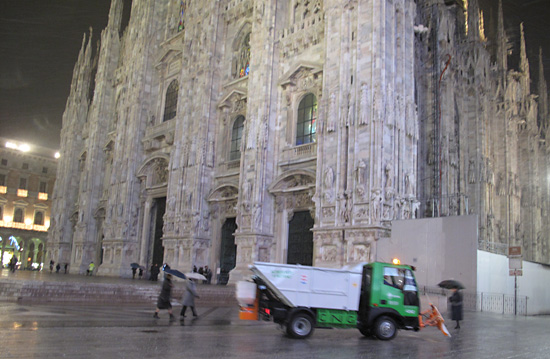
A classic icon – the Vespa – lightly covered with the first snow and awaiting more.

Here’s the view outside my bedroom window, to the courtyard Christmas tree across the street. Snow has accumulated to about 2 inches since this shot was taken a couple of hours ago.
